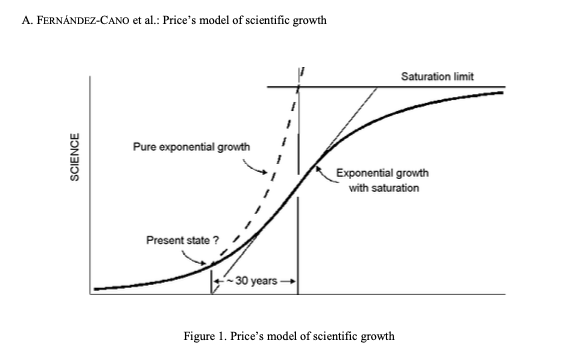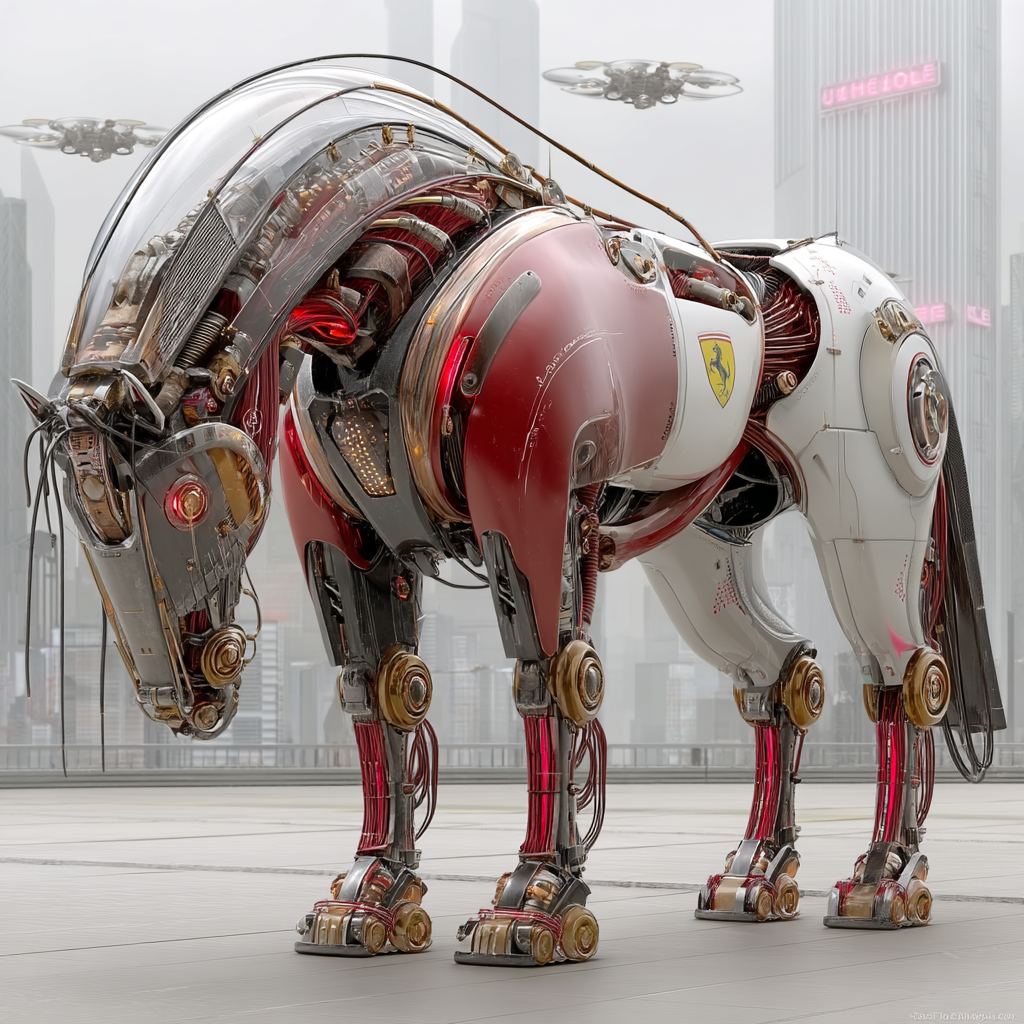Disclaimer: this is a long one. It's important. If you can't be arsed, that's ok.
This one is 90% shorter.

You can also tune into a short podcast that touches on some key data points:
Alright, if you're still around, you mean business. I like that. Let's get to it.
The statistics on IVF are staggering; the need is real. The average age of first pregnancy rises year after year, as does the anxiety that follows.

I'm glad articles like this exist; life often throws in a few plot twists before the 'starting a family' chapter begins in earnest. Even then, there is at least a half-chance that there's an absolute mind-melter waiting for you on the very next page. So we need to address all the questions, the options... the confusion... the choices that land rather unapologetically in the laps of the couple who find themselves somewhere close to destination baby.
But the overwhelming majority of these articles are missing something really quite important.
Whilst the world sleeps soundly on, even most of the insomniacs are not watching this stuff play out. The truth is that the current science is already considerably beyond the science that same poor couple are using to try and orientate themselves in these new lands without firing up too much of the old nightmare-fuel. It takes time for scientific consensus to work its way through the media machine, always does, often facing active resistance the whole way down. Even when it finally lands and takes root, you can find at least one shouty mob getting all shouty about something.
Basically, it's slow. Painfully slow.
As of the time of this writing, Apr 19, 2025 01:03AM, this is my best attempt so far at capturing the main themes within fertility science that are rapidly converging upon fundamental shifts in the way we understand, and extend, the viable fertility window.
Why did I include the hour in that time stamp? Put simply, each hour in 2025 may as well be given a different name; it does not correlate very well to the duration of time we have become accustomed to calling "an hour". In areas like biotech, focused effort, amplified by converging technologies, can in each hour yield insights that once took months—sometimes years—of traditional research.
I appreciate that this might sound a little flighty, but it's very much grounded in reality: advanced simulations can now test biological interactions or drug effects virtually overnight, bypassing years of slow, physical lab experiments that really were cutting-edge. For their time.
Look, the timeline you probably carry in your head about fertility? It’s likely running on yesterday's software, based on science that’s already been superseded. What’s happening now isn’t just incremental improvement; it's a fundamental shift driven by powerful forces colliding – artificial intelligence, deep biotech, and the science of aging aren't just advancing on their own tracks anymore. They're actively feeding each other, converging to create a momentum, a combined thrust, leaving previous standards of progress look almost pedestrian.
We have essentially ended up in a kind of arms race, where each "side" increases the ability of the others with every successive breakthrough. A breakthrough in one area, like AI pinpointing the subtle markers of egg health or a new gene-editing tool for cellular tune-ups, instantly fuels the others. It reminds me a little of how nuclear reactors work, but let's not go there. This isn't neat, linear progress; it's messy, dynamic, and exponential, radically compressing the time it takes for real, usable therapies to emerge.
This isn't some far-off theoretical, another 'maybe' from a mind deranged by too much time spent in the electric dreams of their artificially intelligent friend. This acceleration is translating into tangible, practical tools landing in clinics right now, actively rewriting the biological rulebook we once (still) thought was fixed.
Imagine walking into a clinic, maybe not that long from now - a quick blood draw, in a few minutes analysed by the patterns inherent to your unique biology, highlighting (hopefully in green) exactly what's affecting egg quality or ovarian reserve. Within hours (the old kind), that insight then shapes a personalised, low-impact treatment plan designed more or less just for you. Techniques are already emerging for whisper-quiet egg retrieval and lab maturation, easing the physical toll, coupled with AI that assesses embryonic potentials with a kind of nuanced precision that only the seasoned clinician really appreciates.
It streamlines the whole damn process, boosts success and makes it more sustainable. This isn't science fiction; it's a direct, demonstrable payoff from these technologies learning to come together. And this is the least sophisticated it will ever be.
"any sufficiently advanced technology is indistinguishable from magic" ~ Arthur C Clarke
So, what does this magical whirlwind of synergistic science actually mean for you? It means solid ground beneath your feet: real, actionable hope and, crucially, more runway than the old biological expiry date suggests. Scientists are figuring out how to gently nudge follicle development, maintain egg quality longer, and become exponentially smarter at selection – stretching the window of possibility with more than a little white-coated flex.
It carves out breathing room, opening up pathways quite beyond what seemed attainable even a few years ago. Biology still lays down the baseline rhythms, sure, but this potent brew of innovation hands us powerful new levers. With levers comes force and with force, sometimes, comes confidence.
Your confidence.
Breaking Down the Toolkit: Key Levers
Here’s a snapshot of some of the moving parts – distinct tools and approaches that are conspiring to shift the landscape in a technological coup - and I think they mean business. Think of these less as isolated miracles and more as interconnected gears in a rapidly evolving, angelic machine:
- Hitting the Slow-Mo Button on Ovarian Aging
- The Science: Early results from trials (like VIBRANT) using low-dose rapamycin suggest it can dial back the rate of ovarian aging by roughly 20%.
- Metaphor: Less like replacing a burnt-out bulb, more like installing a dimmer switch on the whole aging process in the ovaries. Keep the existing hardware running smoother, longer. Better.
- Why It Matters: Every year you can effectively "slow down" adds precious extra months of viable egg life. String a few of those years together, and suddenly the typical fertility horizon nudges significantly outwards – think closer to 50 than the old ceiling of 45, or whatever it last was. More time on the clock.
- Waking Up the Sleepers: Reviving Dormant Follicles
- The Science: Injecting platelet-rich plasma (PRP) or concentrated growth factors ("exosomes") directly into the ovaries is showing promise in early trials for coaxing dormant follicles back into action.
- Metaphor: Like giving a surprisingly effective pep talk (or maybe just a good watering) to seeds you thought were long gone, convincing them to at least consider a good sprouting.
- Why It Matters: Even a modest boost (say 30%) in the number of available follicles before an IVF cycle can dramatically increase the total eggs you retrieve over time. More shots on goal from the existing reserves.
- Gentler Harvests: Low-Hormone Retrieval & Maturation (OSC-IVM)
- The Science: New lab techniques (like OSC-IVM) allow clinics to collect immature eggs during natural or minimally stimulated cycles and finish the maturation process outside the body. First live birth using this hit the news in 2024.
- Metaphor: Picking tomatoes green and letting them ripen with the sun on the windowsill, instead of force-ripening everything on the vine with this or that chemical.
- Why It Matters: Slashes the drug load - kinder to your body and potentially preserves ovarian reserve for longer. Keeps the door open for retrievals later than aggressive stimulation protocols might allow. Less brute force, more...finesse. Not quite the grace of Mother Nature herself, but we've come quite some way in recent years.
- Smarter Choices: AI for Embryo Selection & Safer Checks
- The Science: Deep learning algorithms are now consistently outperforming even experienced embryologists in predicting which embryos have the best shot at leading to a live birth. On top, AI-enhanced blood tests (cfDNA) can flag potential chromosomal issues faster and less invasively.
- Metaphor: Giving the embryologist X-ray vision, or swapping out a standard magnifying glass for a high-powered, AI-driven microscope to find the cells ready for some serious action.
- Why It Matters: Better selection means higher success rates per transfer (pushing ~10-12% success at 46 potentially towards 15-18% or higher), fewer wasted attempts, and less need for invasive testing during pregnancy. Improves the odds with each step.
- The Long Game: Maintaining Egg Quality
- The Science: Therapies targeting cellular "junk" (aka "senolytics") and even potential gene-therapy "repair kits" are showing they can extend egg quality (not just quantity) in animal models. Human trials are beginning to explore this and, all being well, could join in the war effort against underpopulation (yes, it's a thing) sooner than you might expect.
- Metaphor: Not just checking the fuel gauge, but actually servicing the engine – ensuring the performance stays high regardless of the mileage on the clock.
- Why It Matters: This is about keeping the eggs you do have healthier for longer. Provides a crucial backstop if follicle numbers start to dwindle, focusing on the intrinsic health of the remaining potential.
- The Ultimate Backstop: Lab-Grown Eggs (In Vitro Gametogenesis)
- The Science: Researchers (notably in Japan) have successfully created functional mouse eggs from simple skin cells. The ethical and regulatory path for human use is complex, but the science is advancing.
- Metaphor: Essentially, a biological 3D printer capable of creating personalised spare parts – in this case, eggs. Yup - egg printers.
- Why It Matters: Represents a potential future pathway to genetic parenthood even if natural egg reserves are completely exhausted, pushing the possibility well past 50. Still on the horizon (think early 2030s), but a radical game-changer if it pans out.
- AI: The Quiet Co-Pilot Weaving It All Together
- The Application: Beyond just embryo selection, AI is becoming an integral player in most if not all of the games mentioned thus far. Machine learning models are optimising stimulation protocols (predicting ideal drug doses, timing, that kind of thing) to reduce drug loads without sacrificing yield. It's analysing vast datasets to personalize treatment in ways that, until very recently, simply were not possible.
- Metaphor: Less like a flashy new gadget, more like sophisticated navigation (GPS) and cruise control integrated seamlessly into the entire IVF journey – optimising the route, conserving fuel, improving the ride.
- Why It Matters: Higher success per try plus gentler, more personalised stimulation means you can realistically undertake more attempts within a given timeframe, maximising your chances. It's the integration layer making all the other pieces work better together. The more they integrate, the more we learn what works.
A Potential Roadmap (2025-2030) - Stay Agile, Adapt as Needed
This isn't a rigid prescription (or even a soft one, and this is not financial advice), more like a potential sequence based on where the tech might be heading. Think of it as navigating with a good map, but being ready to detour based on real-time conditions (your results, new breakthroughs...).
| Year | Potential Action | Rationale / The Why |
|---|---|---|
| 2025 | Get the baseline data (AMH, AFC); consider a PRP "tune-up". | Know your starting point; low-cost way to potentially wake up dormant potential. |
| 2026 | Gentle harvest (OSC-IVM) paired with AI smart-selection for embryos. | Kinder retrieval process; leverage AI to avoid wasting attempts on poor prospects. |
| 2027 | Integrate rapamycin protocol (assuming solid final data from VIBRANT trial). | Actively pump the brakes on ovarian aging while continuing efforts. |
| 2028 | Re-check the reserves; explore early access to quality-boosters (senolytics/gene therapy trials if eligible). | Shift focus to engine performance (quality), not just the fuel level (quantity). |
| 2029-30 | Strategic call: Bank viable embryos now, or play the long game waiting for lab-grown egg tech? | Secure concrete options now vs. betting on the next major breakthrough for the 50+ game. |
Not convinced? Let's make some punchy one liners.
- The scientific toolkit backing your fertility isn't just growing; it's upgrading, fast.
- Forget the fixed timeline; your biology isn't a static clock, it's a dynamic system science is learning to actively influence.
- Science isn't whispering in the background, you're just not listening; it's getting busy rewriting the biological script you thought was final, right now, and it's actually making quite a lot of noise.
- Those old fertility deadlines? Project management is having a change of heart, even if they can't all agree on what that is exactly.
- Yeah, nature draws lines. But our ability to shift those lines? It's starting to approach escape velocity. I'm willing to bet we will beat Elon in the space race, it just won't involve space, rockets or trying to populate what is quite clearly a planet that wants to be left alone.
- Here’s the critical point: Right now, the sheer pace of science is starting to outpace your biological clock. It's not that surprising, really; we don't even know what time is.
- Every significant discovery isn't just 'news'; it's another concrete option, another lever that pulls on other levers and before we know it it'll be levers the whole way down. Levers you can pull on your timeline. I stopped reading sci-fi a while back - I love the stuff, but it's considerably more fun when its actually happening on your actual planet in your actual lifetime.
- Biology may have written down the initial playbook, but relentless innovation is busy hacking that thing on the daily. Nature has succeeded in creating creatures that are starting to change nature itself. Talk about role reversal, right?
"Lovely words mate, but you're an absolute dreamer. Total space cadet." ~ a good percentage of people that made it this far
Ok, I understand.
More.

| Catalyst | What’s Happening / The Guts | Why It Cranks Up the Speed |
|---|---|---|
| Tech Stacks Colliding | The Silos Are Down: Aging research, gene editing (CRISPR et al.), and AI/ML aren't just neighbours anymore; they're actively jamming together. Tools like AlphaFold 3 can now map out complex biological machinery (protein-RNA-DNA interactions) virtually, slashing work that took months in the lab down to minutes on a screen. | The Multiplier Effect: It's pure synergy. Spot a new aging gene target? The AI tools to analyze it and the gene editors to potentially tweak it are already warmed up and waiting. No more sequential waiting games. |
| AI Design Engines Running Hot | From Idea to Candidate Overnight: Companies are building massive AI models (think biology-specific GPTs) that churn through potential drug or protein designs by the tens of thousands while we sleep, ranking the most promising ones. The first AI-designed biologic is hitting human trials this year (2025). | Cutting the Red Tape (Scientifically): This drastically cuts the time from identifying a potential drug ('hit') to getting it ready for initial human testing ('IND') – potentially from 2.5 years down to less than one. More shots on goal for fertility treatments entering the pipeline annually. |
| Regulatory Pathways Being Paved | Breaking the Logjam: The FDA giving the green light to Casgevy (a CRISPR therapy) isn't just about that one drug; it creates a template, a known pathway, for future gene-editing approvals. | Drafting Behind the Leader: With a proven regulatory framework, similar gene edits targeting ovarian aging (like those focused on mitochondria or specific metabolic pathways) can potentially follow that same streamlined path, avoiding years of foundational regulatory debate. |
| Tech Already Landing in Clinics | Beyond the Lab Bench: Stuff like low-dose rapamycin, gentle egg maturation (OSC-IVM), and AI for embryo selection isn't theoretical anymore. They're in late-stage trials or already starting to see clinical use. | Fast Adoption Potential: Because these are often drug-based, AI-driven, or refined lab techniques (not entirely new surgical procedures requiring decades of training), their uptake could be rapid – more like how smartphones spread than how complex surgeries slowly trickle down. |
| The Rapid Response Dream (Getting Real) | Hyper-Personalized Fixes, Fast: Imagine this workflow: quick blood test (cfDNA) identifies a problematic gene variant linked to aging, AI predicts its impact (AlphaMissense/Fold), and a custom gene editor 'patch' is potentially designed and even 'printed' locally – all within maybe 48 hours. | Scaling the Playbook: If this rapid turnaround becomes feasible for rare diseases soon (say, by 2029), applying the same process to more common genetic factors in ovarian aging becomes an engineering and scaling challenge, not a fundamental scientific barrier. |
| Going Straight to the Source Code | Beyond Symptoms, Targeting the Engine: New approaches like senolytics (clearing out old 'zombie' cells) or epigenetic reprogramming aim to tackle the fundamental aging processes within the egg itself, not just optimizing the environment around it. | Potential for Leapfrogging: If these core-aging interventions work well, they could offer a massive leap in egg quality, potentially blowing past the slower gains from just trying to get more follicles. A true step-change, not just gradual improvement. |

Letter to a Christian Nation
My darling luddites, I appreciate your conservatism, I really do. Without you, we'd probably be dead. Someone has got to stop the dog running carelessly down the road.
But I can't sit by and watch you hold too tightly on the steering wheel (a rather funny image really, considering your predecessors were utterly convinced the horse was a vastly more effective and reliable aide than the motor vehicle). We have to go to considerable length to even make it safe for horses to take the routes that were built for what came next.
Scientific knowledge has always grown at an exponential rate. We began seriously quantifying this back in the early 20th Century, built upon works much older still. This chap, D. J. de S. Price was posthumously lauded as "...truly, the Father of Scientometrics" (Larsen & von Ins, 2004)
"It seems beyond reasonable doubt that the literature in any normal, growing field of science increases exponentially, with a doubling in an integral ranging from about ten to about fifteen years." ~ D. J. de S. PRICE

This was before the internet took off, let alone AI.
Check this: Price nailed the exponential curve of scientific knowledge decades ago – just look at publication growth, it's relentless.
Now, overlay a rough plot of AI capability – maybe using model size or compute power as a stand-in. For years, it barely registers. Then, boom. Post-internet, and especially post-deep learning around 2012, the AI curve goes near-vertical.
It doesn't just follow Price's curve; it launches off it, accelerating at a rate that makes the already steep scientific growth look like a particularly tame horse. The internet built the highway Price predicted; AI put a rocket engine on the vehicles using it. His predictions weren't just right; they were arguably conservative in the highest order.
When you factor in the sheer combined force of AI, biotech, and aging science all slamming into this problem simultaneously, that 2025-2030 roadmap? The horses will need to get off the roads. Rapidly.
Let's be real: your average fertility doc probably isn't plugged into the absolute bleeding edge mentioned here – things are moving too damn fast and they're too damn busy. So, relying solely on standard channels means you'll likely miss this accelerating wave.
If you want to tap into these faster timelines, you need to nudge the process. That might mean researching clinics tied to university research programs, seeking out specialists known for embracing experimental approaches, or connecting with online communities where trial info gets shared. If you run out of all other options, at least you can come back here.
The info's out there, but it isn't coming by Deliveroo.
Or on horseback.

Maybe, baby.
References
Larsen, B., & von Ins, M. (2004). Reconsidering Price's model of scientific growth: An overview. Scientometrics, 61(3), 301–321.
D. J. de S. PRICE. (1978). Science since Babylon (3rd ed.). Yale University Press, New Haven
Me and gemini-2.5-pro-exp-3-25, eds. (2025)







Comments